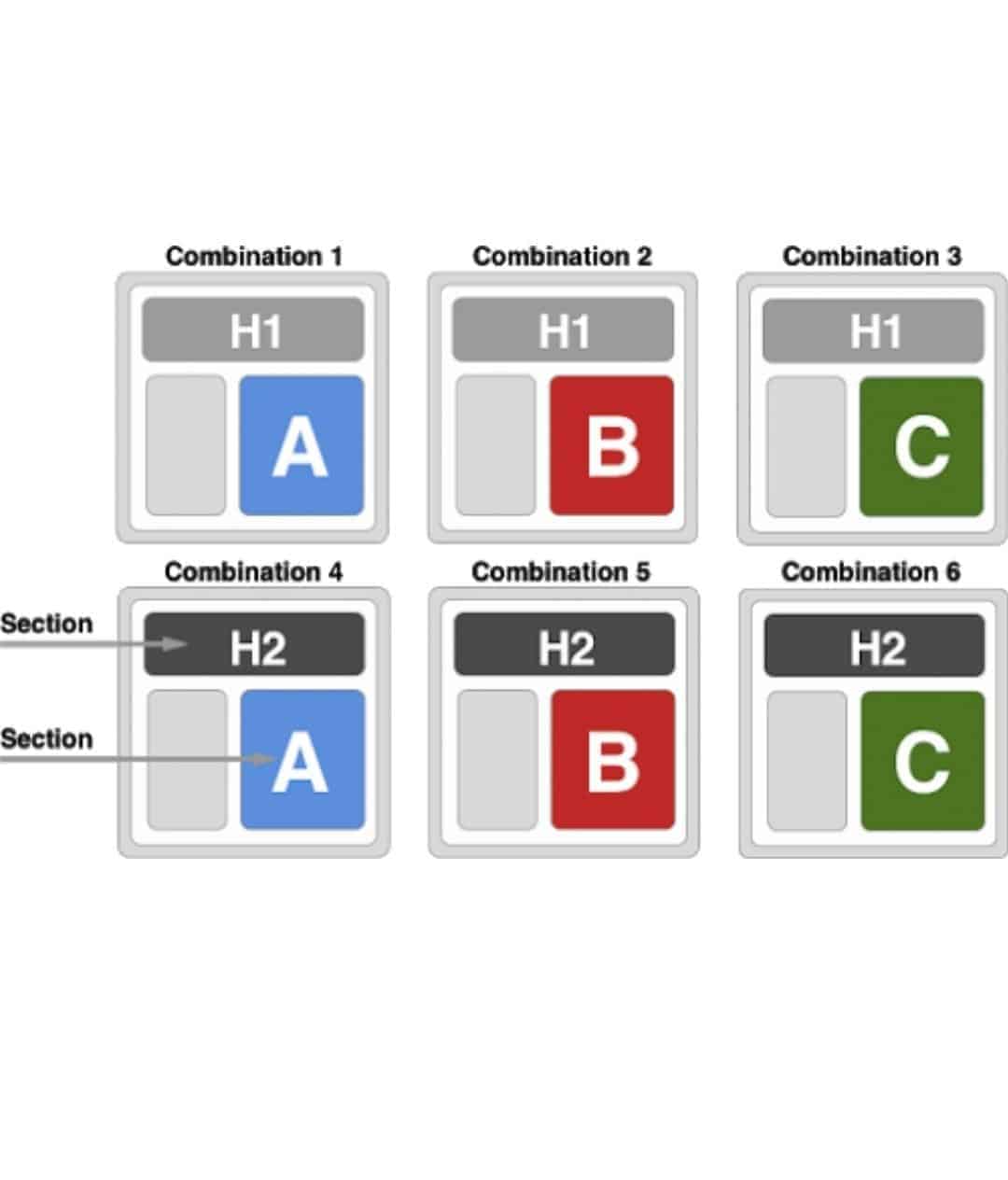Google releases new and helpful tools for marketers all the time, because everyone wants to be at the top level in the SERP ranking (Search Engine Results Page).
One such brilliant tool is Google Optimize.
The best way to understand it is to think of it as a testing tool. This split – testing tool allows you to experiment with different ways of delivering content.
You may have more than one ideas on how you want to give content to your audience, but you’re not sure which idea will give you the most return on investment or ROI.
So Google Optimize helps you test out all your ideas to make sure you achieve maximum optimization of your content and the way you deliver it.
There are three main sub tools that Google Optimize uses:
- A/B testing
- Multivariate testing
- Redirect tests
Now, before we get into each of these tests individually, we’ll first see how Google Optimize works. It’s a two step process.
Step 1. THE EDITOR
As the name suggests, the editor helps you create different versions of your pages. The versions can vary depending on content, design, colour, options, navigation etc. When you create them, you may like two or three different versions so you can now check which one of them brings you the most profit.
Step 2. THE REPORTING SUITE.
This is where you get the results. How? Don’t forget that the Google Optimize account is linked to your Google Analytics account. So it is in the reporting suite that you get to see which of the versions got the best click through rate.
You will use the Editor and the reporting suite together as a design and report team respectively to use what best goes with your brand / website for your audience.
Now let’s get into the three types of testing:
A/B testing
This is basically a 2 versions test. You have version A and version B, both with potential, and you want to see which one gives you the most conversions. So you chose the A/B testing method to see which performs better with your consumers.
Multivariate testing
Multi means multiple, we all know that. You use this kind of testing if you want to test multiple elements on a page simultaneously.
An A/B testing tests two whole pages separately, but a multivariate testing tests elements on a single page to see which combination gives the most number of conversions.

The above image, on Google’s site, shows two different headlines (H1 and H2) and three different images (A, B and C).
Which one of the combinations will lead to the best click through rate? There are six possible combinations:
H1 with A
H1 with B
H1 with C
H2 with A
H2 with B
H2 with C
Now, if this was A/B testing, then you’ll have to have 6 different pages altogether and test out all six. That’s a lot of time, money and effort.
In multivariate testing, all you have to do is give in the options and combinations, and the tool will do the testing on a page by changing the variables ONLY.
Redirect tests
They are a type of A/B tests. They are mostly used when you want to test multiple different landing pages or when you completely redesign a web page.
Why should you use Google Optimize?
This is a solid question. If you have a good page that gives you good conversions then why test it at all? Right?
The point is to achieve a higher conversion rate and increase the quantity, quality and value of visitors to your website page.
Let’s say you get about 10,000 people visit your site, and 2% of those people convert from viewers to consumers at the rate of Rs. 20, then those viewers will bring you Rs. 2000 in total.
Now, you use Google Optimize.
One of the testing will give you boosted sales and the percentage of conversations will go from 2% to 3% and the ROI will increase to Rs. 3000/-.
Note that that numbers are just for example and understanding purposes. The actual profits may be much much higher for companies but the concept remains the same.
So in this way, every time a Google Optimize test makes one or more of your pages get more conversions and the clock through rate increases, then the value of your website increases.
Why Google Optimize and not other conversions increasing tools?
Yes there are many other tools from different brands, companies and websites that offer split testings and conversion rate optimization.
But the thing is, none of those tools integrate or sync with Google Analytics as Google Optimize does.
Since it’s a branch of the Google chain, it’s simpler, easier to use and much more effective with Google Analytics that anything else.

